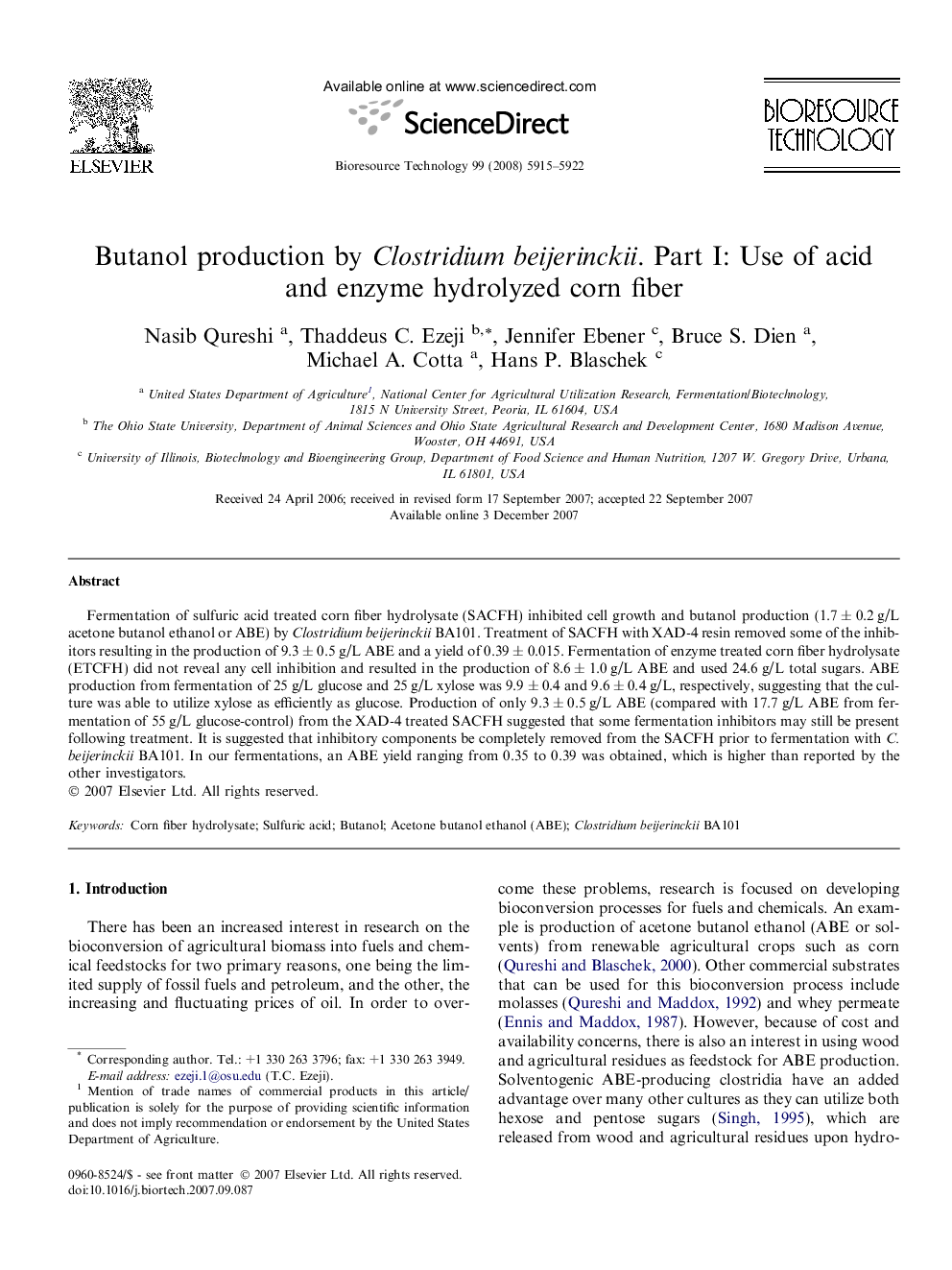| Article ID | Journal | Published Year | Pages | File Type |
|---|---|---|---|---|
| 685157 | Bioresource Technology | 2008 | 8 Pages |
Fermentation of sulfuric acid treated corn fiber hydrolysate (SACFH) inhibited cell growth and butanol production (1.7 ± 0.2 g/L acetone butanol ethanol or ABE) by Clostridium beijerinckii BA101. Treatment of SACFH with XAD-4 resin removed some of the inhibitors resulting in the production of 9.3 ± 0.5 g/L ABE and a yield of 0.39 ± 0.015. Fermentation of enzyme treated corn fiber hydrolysate (ETCFH) did not reveal any cell inhibition and resulted in the production of 8.6 ± 1.0 g/L ABE and used 24.6 g/L total sugars. ABE production from fermentation of 25 g/L glucose and 25 g/L xylose was 9.9 ± 0.4 and 9.6 ± 0.4 g/L, respectively, suggesting that the culture was able to utilize xylose as efficiently as glucose. Production of only 9.3 ± 0.5 g/L ABE (compared with 17.7 g/L ABE from fermentation of 55 g/L glucose-control) from the XAD-4 treated SACFH suggested that some fermentation inhibitors may still be present following treatment. It is suggested that inhibitory components be completely removed from the SACFH prior to fermentation with C. beijerinckii BA101. In our fermentations, an ABE yield ranging from 0.35 to 0.39 was obtained, which is higher than reported by the other investigators.
